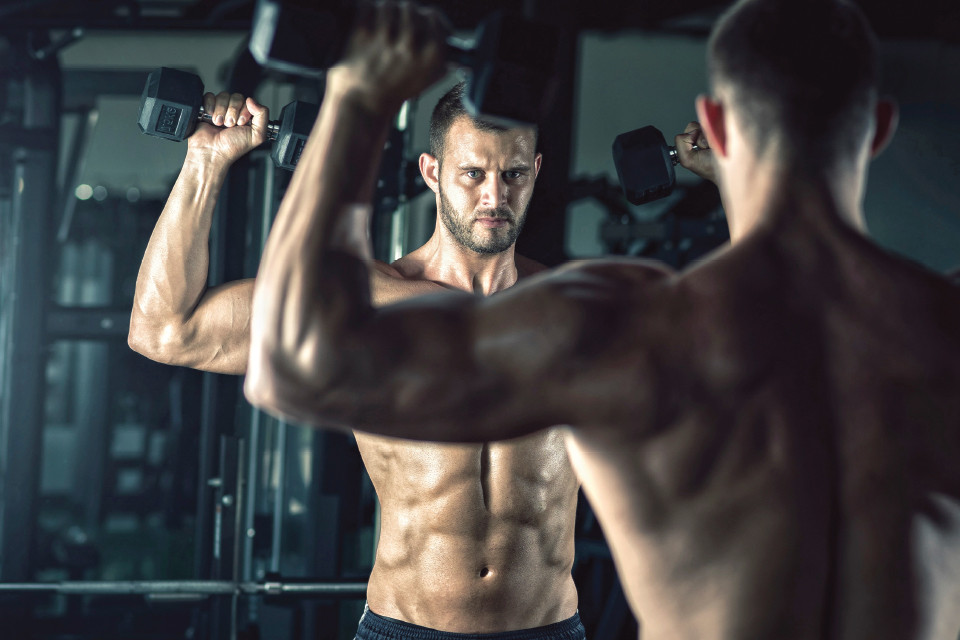Appearance vs. Performance

Many things—from flower bulbs to bulking muscles—get covered over in winter, making the spring and summer months a time for uncovering. It’s a time for renewal and challenges; possibility and dreams. For many in the fitness community, spring means finally exercising outside without three or four layers on. It is just as much a time to refine technique and train for summer competitions as it is a time to prepare for the upcoming swimsuit season.
Those who compete in performance-based fitness events though will notice an incompatibility between the two types of training mentioned above—one focuses on physical performance and the other physical appearance. The difference: a body that looks pristine in the mirror is not necessarily the same body that achieves victory or success in competition. The athlete who looks the most impressive or intimidating in the mirror is not guaranteed to be the same athlete who stands on top of the podium. Of course, I don’t mean to propose that an inverse relationship exists between physical appearance and athletic performance; in fact, any serious and accomplished athlete will have a body that looks impressive. Rather, my point is that physical appearance is not in itself predictive of athletic performance.
The relationship between physical appearance and athletic performance is perhaps one of the most overlooked, discounted, least understood, and altogether neglected aspects of fitness. For an unhealthy example of this relationship, one might point to starvation and bulimic practices—not to mention the ingestion of unhealthy doses of so-called “dietary supplements” taken by fitness models striving to attain the appearance needed to grace magazine covers or walk the runways of physique competitions.
Is it truly healthy for most males to have 5 percent body fat or for most females to dip under 10 percent body fat? While most health care providers would respond with a resounding “no,” certain corners of the fitness industry continue to perpetuate ridiculous ideals of physical appearance—the attainment of which wreak havoc on the physical and emotional health of many. The question at the center of this conversation: Would a physique model or a fitness magazine coverboy be able to walk right off the stage and crush a hard-core workout? The answer: Not a chance. Their bodies are often so dehydrated and starved of food that exercise at any level of intensity may be dangerous for them to attempt.
Camille LeBlanc-Bazinet, the reigning CrossFit Games women’s champion, offers a healthy example of how athletic performance is enhanced to the detriment (at least to some observers) of physical appearance. LeBlanc-Bazinet decided to bulk up to improve her strength, which allowed her body to lift heavier weights at high repetitions—an absolute necessity in order to be successful at elite CrossFit competitions. Eschewing an anorexic view of beauty that she held earlier in her life in which, in her words, “beauty meant being as skinny as you could be,” LeBlanc-Bazinet instead chose to embrace an ideal of physical attractiveness that emphasized the notion that women are successful not because of appearance, but because they work hard and dedicate themselves to things they believe in.
So how might we begin to put into practice the notion that performance trumps appearance?
Many of us have probably spent at least some portion of our exercise lives motivated—to a greater or lesser degree—by the thought that the workouts will improve our looks. This is not, in itself, a bad thing. In fact, research tells us that an exercise-toned body has a vast array of psychological and emotional benefits. However, shameless time spent standing on a scale or posing in front of a mirror examining the effects of a recent strength or cardio cycle, or repeatedly asking one’s spouse or partner if he or she notices any differences in appearance all invite and reinforce obsessional thinking behaviors.
The mirror and the scale are not only big fat liars (both provide, at best, only the most general information about your actual health and fitness), but an excessive use of them often makes you feel bad about yourself—promoting addictive, unhealthy self-preoccupation. It is no accident that you won’t find a scale or vanity mirrors at top fitness studios and training centers around town like Dane’s Body Shop, Atomic Athlete, Of The Lion, The Rail, and Sharp End Athletics—just to name a few. In both exercise and life, what’s important should not be how you look, but what you do.
With that in mind, I challenge you to go on a behavioral diet or fast. For the next 30 days, avoid weighing yourself or using the mirror to examine any aspect of your appearance except during practical activities (e.g., shaving, brushing your hair and teeth, applying make-up, making sure that articles of clothing go together, monitoring the form of a workout move, etc.). If you can make it to 30 days, you are well on your way to establishing new and healthier habits. The hope:
You will evaluate workouts on their own terms and in reference to performance-related goals and NOT in terms of numbers on a scale or reflections in the mirror.
You will like yourself more, and you’ll get along better with others.
You will come to view food more as fuel for your workouts instead of as an enemy you must resist or as a reward to rationalize poor dietary choices.
You will be less inclined to slip into unhealthy patterns of thinking that undermine self-confidence and self-acceptance.
It’s a recipe for starting the summer off right. Be prepared to fend off and ignore all the unhealthy messages that start up this time of year from fashion retailers, weight loss clinics, anti-aging “specialists,” and less-than-scrupulous gyms promoting what the “new you” can look like and what it can weigh. Just smile and keep walking, content that the “you” in their messages is the only one with the power to accept yourself.






